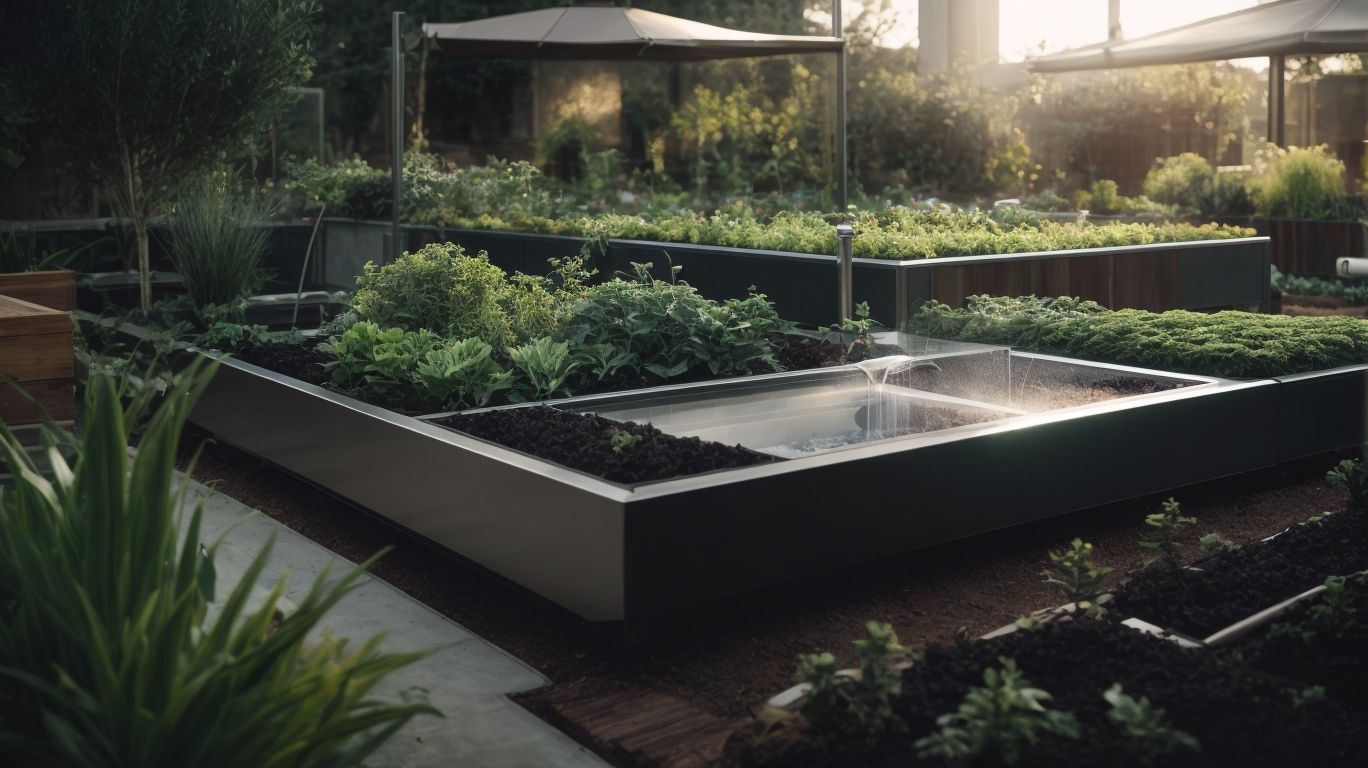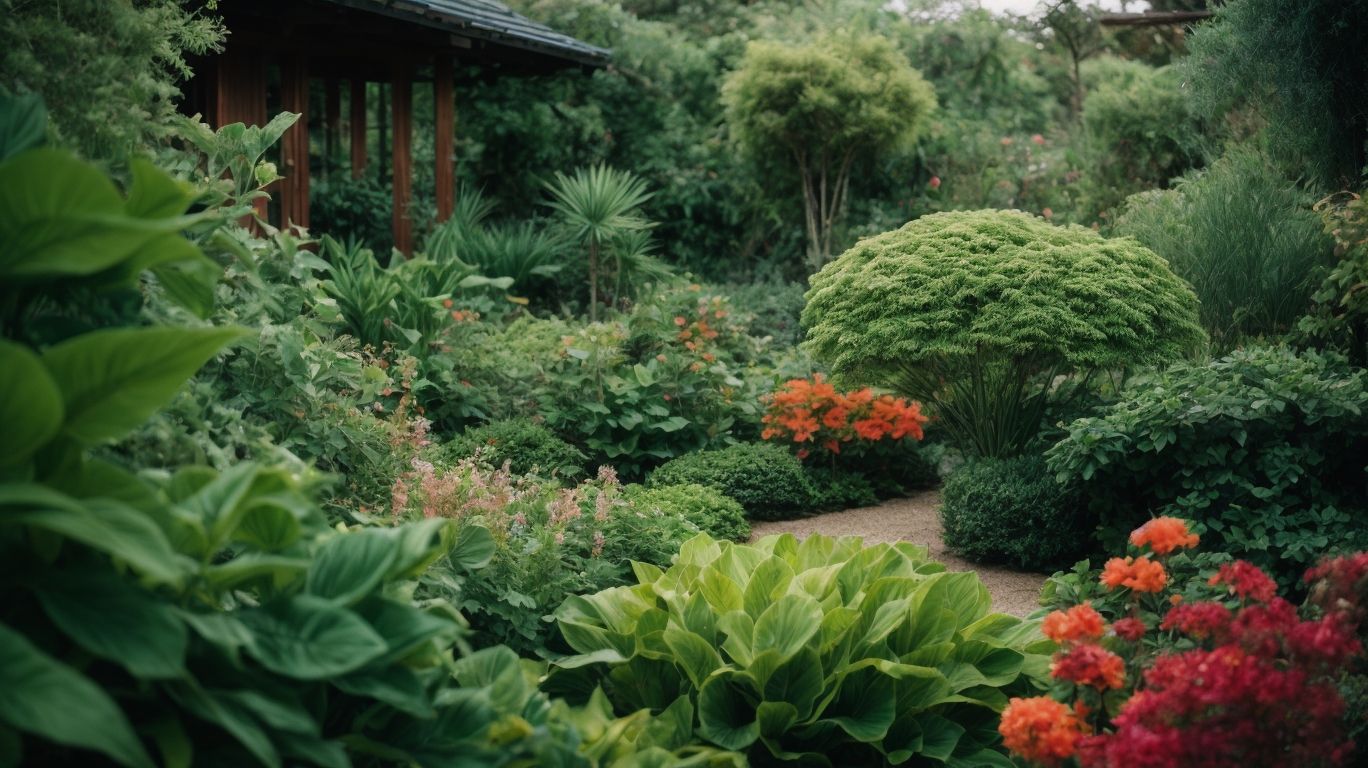Flower gardening is a beloved pastime for many, offering a source of joy, beauty, and tranquility. For individuals with limited mobility, traditional gardening practices can pose challenges. In this comprehensive guide, we will explore adaptive techniques for flower gardening, specifically tailored to accommodate the needs of those with limited mobility.
From the benefits of flower gardening for individuals with mobility constraints to the best flower options and design tips, this article will provide practical insights and resources to help create and maintain an accessible and thriving flower garden. Whether you or someone you know is seeking ways to enjoy the therapeutic benefits of gardening, this article will equip you with the knowledge and tools to cultivate a vibrant and accessible flower garden.
Key Takeaways:
What Are Adaptive Techniques for Flower Gardening?
Adaptive techniques for flower gardening are specialized methods and practices designed to accommodate the needs of individuals with physical limitations, enabling them to engage in gardening activities with greater ease and accessibility.
One of the most popular adaptive gardening techniques is raised garden beds, which are elevated planters that enable individuals to garden at a comfortable height, minimizing the need to bend or kneel. Container gardening is another effective method, allowing for flexibility in the location of plants and the use of portable containers. Specialized tools such as long-handled trowels, ergonomic grips, and adjustable-height workbenches further enhance accessibility and comfort for gardeners with disabilities.
These adaptive techniques not only promote physical well-being but also provide therapeutic benefits, enhancing the overall gardening experience.
Why Is Flower Gardening Beneficial for People with Limited Mobility?
Flower gardening offers substantial benefits for individuals with limited mobility, providing therapeutic, sensory, and recreational activities that contribute to overall well-being and quality of life.
Engaging in flower gardening allows individuals with limited mobility to enjoy the therapeutic value of connecting with nature. The act of nurturing plants and witnessing their growth can be profoundly satisfying, offering a sense of purpose and accomplishment. The sensory experiences of feeling the soil, smelling the flowers, and hearing the rustle of leaves can provide a calming and grounding effect.
There are numerous resources available for adaptive gardening, including raised beds, ergonomic tools, and vertical planters, which enable individuals with limited mobility to participate in this fulfilling activity.
What Are the Best Flowers for People with Limited Mobility?
Selecting the best flowers for individuals with limited mobility involves considering low-maintenance varieties, container-friendly options, and plants suitable for raised beds and hanging baskets, often complemented by reaching aids for easy access and care.
Low-maintenance plants such as hostas, daylilies, and coreopsis are ideal choices, needing minimal upkeep while providing beautiful blooms. For container gardening, petunias, geraniums, and dwarf marigolds thrive in confined spaces, bringing vibrant colors to any porch or patio.
For raised beds, dwarf sunflowers, daffodils, and lantanas are excellent options, as the elevated nature of these beds allows for easier reach and maintenance. Meanwhile, hanging baskets can be adorned with lobelias, begonias, and trailing fuchsias, adding a cascade of beauty to any outdoor space.
Low Maintenance Flowers
Low maintenance flowers are an excellent choice for individuals with limited mobility, offering effortless beauty and sensory experiences without demanding intensive care or maintenance.
These flowers, such as daffodils, zinnias, and marigolds, not only require minimal upkeep but also provide vibrant colors, enticing fragrances, and tactile textures that can greatly enhance the sensory experience of the garden.
Their adaptability to various climates and soil conditions makes them suitable for adaptive gardening, allowing individuals with mobility limitations to comfortably enjoy the therapeutic benefits of tending to their garden spaces.
Flowers That Can Be Planted in Containers
Flowers that can be planted in containers offer flexibility and accessibility for individuals with limited mobility, allowing them to cultivate vibrant blooms and greenery within reach and in a manageable fashion.
One popular option for container gardening is the versatile and low-maintenance petunia. Its cascading growth habit makes it perfect for hanging baskets, while its bright and cheerful flowers thrive in full sun to partial shade.
Likewise, the compact and colorful nature of marigolds makes them excellent choices for container planting, bringing a burst of sunshine to patios and balconies. For those seeking fragrance, the sweetly scented blooms of dwarf gardenias or aromatic lavender varieties can transform any small outdoor space into a sensory delight.
Flowers That Can Be Planted in Raised Beds
Flowers that can be planted in raised beds present an ideal option for individuals with limited mobility, providing elevated planters that offer easier access, creative design opportunities, and reduced physical strain during gardening activities.
These raised beds not only enhance the accessibility of the garden but also allow for bespoke designs with various types of flowers catering to different color schemes and bloom times. Some suitable flowers for raised beds include:
- petunias,
- marigolds,
- geraniums,
- zinnias and
- calendula.
These selections not only add visual appeal but also require minimal bending or kneeling, making them perfect for those with limited mobility. Raised beds simplify maintenance, reduce soil compaction, and improve drainage, offering a comfortable experience for gardeners of all abilities.
What Are Some Tips for Designing an Accessible Flower Garden?
Designing an accessible flower garden involves strategic planning for pathways, incorporation of raised beds and containers, selection of sensory plants, and utilization of adaptive techniques and resources to ensure a welcoming and inclusive gardening space for individuals with limited mobility.
To create an accessible pathway, consider using firm, stable materials like paving stones or gravel to allow for smooth navigation. Raised beds and containers can be integrated into the design to provide easy reach and maintenance, ensuring that all plants are within comfortable access.
- When choosing sensory plants, prioritize those with varied textures, scents, and vibrant colors to stimulate the senses.
- Consider incorporating wind chimes, water features, or bird feeders to attract wildlife and enhance the overall sensory experience.
Adaptive techniques, such as installing handrails and non-slip surfaces, can further improve accessibility, while utilizing resources like ergonomic tools and garden carts can provide ease in maintaining the garden space.
Keep Pathways Wide and Even
Maintaining wide and even pathways is essential in creating an accessible flower garden, allowing easy navigation for individuals with limited mobility and accommodating various adaptive gardening techniques as needed.
When designing garden pathways, it’s crucial to consider the needs of all potential users. A minimum width of 36 inches is recommended to accommodate wheelchairs, walkers, and other mobility aids, while a width of 48 inches or more is even better to allow for comfortable passage and turning. Selecting a firm, non-slip surface will facilitate smooth movement and reduce the risk of trips and falls.
It’s also important to ensure that pathways are evenly graded and level to prevent any barriers to mobility. Using materials like compacted gravel or paving stones can create a stable and durable surface that remains accessible in various weather conditions. Integrating clever design features such as gentle slopes, curves, and resting areas can further enhance the overall experience and encourage exploration of the garden space.
Incorporate Raised Beds and Containers
Incorporating raised beds and containers is a key aspect of designing an accessible flower garden, providing elevated planting options and flexible arrangements that cater to the needs of individuals with limited mobility.
These raised beds and containers not only offer a practical solution for those with physical constraints but also bring a host of benefits to all gardeners. The elevated nature of raised beds minimizes the need for bending and stooping, reducing strain on the back and knees. It also allows for better drainage and soil control, resulting in healthier plants and fewer issues with pests and diseases.
The contained environment of containers makes them highly versatile, enabling the planting of various flora in diverse locations, even on surfaces that would not support traditional in-ground gardening. This adaptability is invaluable for creating inclusive gardening spaces where everyone, regardless of age or ability, can enjoy the therapeutic benefits of growing their own flowers and plants.
Use Adaptive Tools and Techniques
Utilizing adaptive tools and techniques is crucial for designing an accessible flower garden, enabling individuals with limited mobility to engage in gardening activities with greater ease and independence.
Adaptive gardening tools and techniques encompass a wide range of innovative solutions that cater to the specific needs of individuals with limited mobility. These include ergonomically designed tools with extended handles for better reach, raised garden beds for wheelchair accessibility, and specialized seating options to accommodate varying physical abilities.
By integrating these adaptations, individuals facing mobility challenges can actively participate in planting, tending, and harvesting their garden, fostering a sense of fulfillment and connection to nature.
How Can People with Limited Mobility Maintain Their Flower Garden?
Individuals with limited mobility can maintain their flower garden with the support of lightweight tools, automated watering systems, and assistance from friends and family, ensuring that they can continue to enjoy the therapeutic and recreational benefits of horticultural activities.
Incorporating raised garden beds or elevated planters can offer easier access for individuals with limited mobility, reducing the need to bend or kneel while tending to their beloved plants. Utilizing long-handled pruning shears and gardening gloves with a non-slip grip can enhance comfort and safety during gardening tasks.
Additionally, ergonomically designed tools such as trowels, cultivators, and weeding tools can lessen strain on wrists and joints. Adaptive seating options, like portable stools or benches, provide a convenient resting spot for gardeners as they engage in planting, weeding, and harvesting.
Use Lightweight Tools
Employing lightweight tools is essential for individuals with limited mobility to maintain their flower garden with ease and reduced physical strain, ensuring that gardening activities remain accessible and enjoyable.
Some lightweight gardening tools, such as aluminum trowels and cultivators, provide a sturdy yet manageable option for individuals with limited strength and mobility. These tools are designed to reduce the strain on joints and muscles, making it easier to dig, plant, and weed without a significant physical burden.
Long-handled reachers and pruners extend the gardener’s reach, allowing them to tend to plants and trees without excessive bending or stretching.
Consider Automating Watering Systems
Automating watering systems offers a convenient solution for individuals with limited mobility to ensure proper hydration and care for their flower garden without the need for extensive physical exertion or manual intervention.
Advanced automated watering systems are designed to efficiently distribute the right amount of water to plants at optimal times, ensuring that they receive consistent nurturing without over or under-watering. These systems can be customized to suit the specific needs of various types of flowers and plants, maintaining ideal soil moisture levels for healthy growth.
Installation of these solutions involves placing timers, drip irrigation, or sprinkler systems strategically throughout the garden, and connecting them to a water source. The simplicity and hands-free operation of automated watering systems make them highly beneficial for those with limited mobility, as they can be managed remotely through mobile apps or programmed schedules.
One of the significant advantages of automated watering systems is their ability to enhance water conservation by precisely targeting the root zones of plants, minimizing wastage and reducing the overall water consumption. These systems also contribute to the overall health and longevity of the flower garden, ensuring that it thrives despite potential limitations in physical capabilities.
Enlist Help from Friends and Family
Seeking assistance from friends and family members fosters a sense of communal engagement and support, allowing individuals with limited mobility to maintain their flower garden while enjoying the social and therapeutic benefits of horticultural activities.
Involving the community in the upkeep of these gardens not only creates beautiful outdoor spaces but also provides an opportunity for physical and mental well-being. Horticultural therapy and recreational activities have been shown to have a positive impact on individuals with limited mobility, offering relaxation, sensory stimulation, and a sense of achievement. With the right support and resources, individuals can continue to enjoy their passion for gardening, fostering a sense of belonging and purpose within the community.
What Are Some Resources for Learning More About Adaptive Flower Gardening?
Various resources, including community organizations, horticultural therapy associations, and gardening centers, offer valuable information and support for individuals seeking to learn about adaptive flower gardening, providing access to tools, tips, and practical guidance.
Community organizations such as The National Garden Bureau or local master gardener programs are excellent starting points for those interested in adaptive flower gardening. They often offer workshops, networking opportunities, and educational materials.
Additionally, horticultural therapy associations, like the American Horticultural Therapy Association, promote the benefits of gardening for individuals with special needs, providing valuable insight and practical techniques.
Furthermore, gardening centers and nurseries, such as the Accessible Gardening Center, are equipped with accessible tools, raised beds, and knowledgeable staff to assist individuals in creating adaptive flower gardens.
Frequently Asked Questions
What is adaptive gardening for people with limited mobility?
Adaptive techniques for flower gardening involve modifying traditional gardening methods to make them more accessible and manageable for individuals with limited mobility. This can include using raised garden beds, specialized tools, and other techniques to accommodate physical limitations.
What are some common challenges faced by people with limited mobility in flower gardening?
Individuals with limited mobility may struggle with tasks that require bending, kneeling, or reaching, which are often necessary for traditional gardening methods. They may also have difficulty navigating uneven terrain or carrying heavy objects.
What types of adaptive techniques can be used for flower gardening?
There are many different adaptive techniques that can be used for flower gardening, including raised garden beds, vertical gardening, container gardening, and using specialized tools with longer handles or ergonomic designs.
How can raised garden beds be used in adaptive gardening?
Raised garden beds are a popular choice for individuals with limited mobility because they eliminate the need for bending or kneeling to tend to plants. They can also be built at a height that is comfortable for the gardener to reach, and can even be designed with wheelchair access in mind.
Are there any specialized tools that can make flower gardening easier for individuals with limited mobility?
Yes, there are many specialized tools available that can make flower gardening more accessible for individuals with limited mobility. Some examples include long-handled gardening tools, ergonomic grips, and tools with built-in seats or stools.
Can adaptive techniques be used for any type of flower gardening?
Yes, adaptive techniques can be used for any type of flower gardening, including traditional gardens, raised beds, and container gardens. The key is to find the right techniques and tools that work best for the individual’s specific needs and limitations.


